How to put air in tires in 5 easy steps
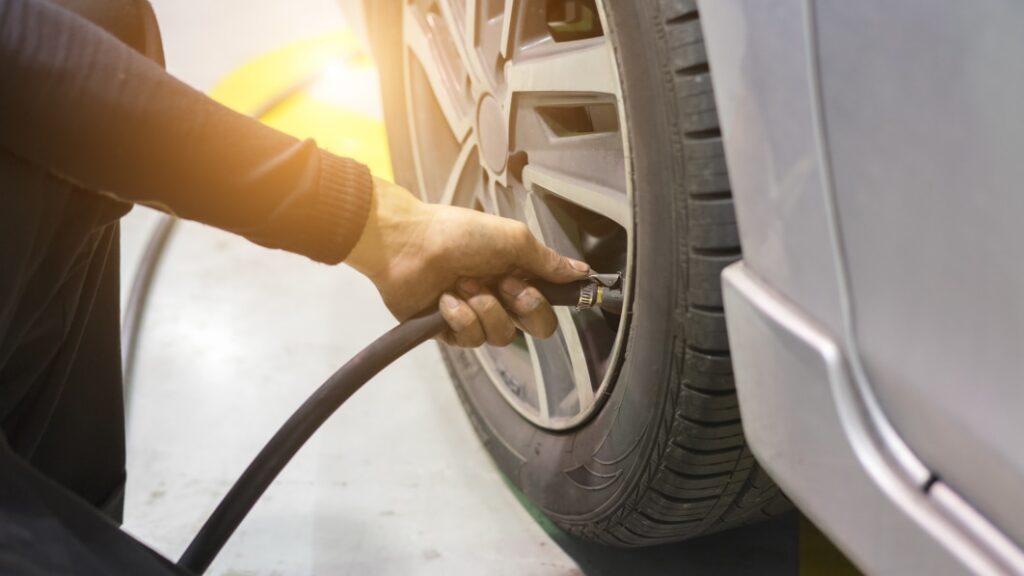
Autoblog may receive a share from purchases made via links on this page. Pricing and availability are subject to change.
One of the most important parts of maintaining your vehicle is keeping your tire pressure at the right level. Every car owner should know how to inflate a flat tire as part of regular vehicle care. The knowledge may come in handy during a road trip or an emergency. Too much or too little pressure can cause problems with ride quality and the reliability of your tires. In extreme cases, like hitting a large pothole, or running over some glass, a razor blade, or other sharp object, your tire may need to be professionally repaired or replaced. Your tires should always be inflated to the recommended levels, which are set by the tire manufacturer, in order to get the most out of them, and your car. Here is a detailed guide on how to put air in tires.
Tools you’ll need before you start
Instructions to put air in tires
Step 1: Find what your recommended tire pressures are
Start off by finding out the recommended tire pressures for both the front and rear tires of your vehicle. This can be found on the sticker on the side of the driver’s door. These numbers show what tire pressures your manufacturer recommends for your vehicle so you can get the most out of your car while driving. Different cars have different pressures, so always check this label before inflating.
Step 2: Get your tire inflator ready
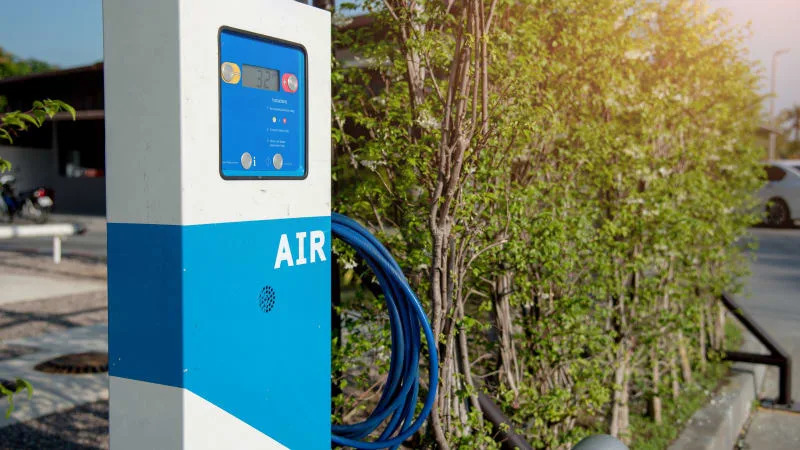
Turn on the air compressor. You can use your own tire inflator or compressor, or you could use the machine at a gas station. Most gas station inflators are away from the gas pumps and near the edge of the lot. They can be paid for with coins or with a card. Some stations or tire shops offer free air.
Step 3: Remove the valve stems
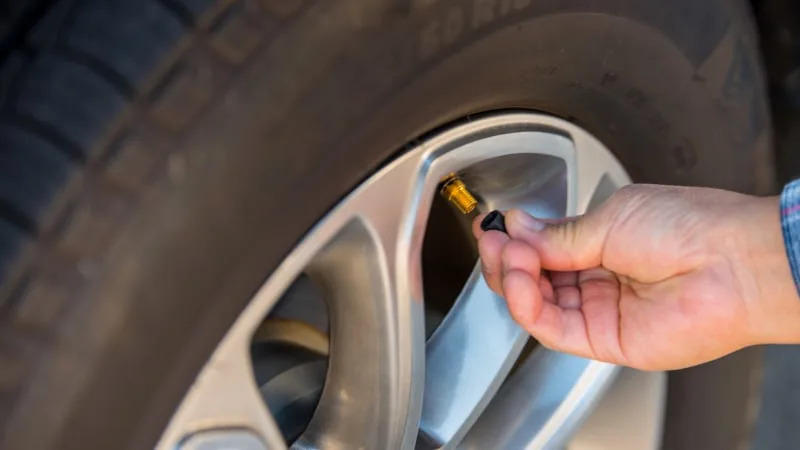
Remove the valve stem caps from your tires so you can connect the tip of the inflator and start adding air. Simply twist off the black cap until it comes unloose and put it in a safe place where you won’t lose it.
Step 4 – Start inflating your tires
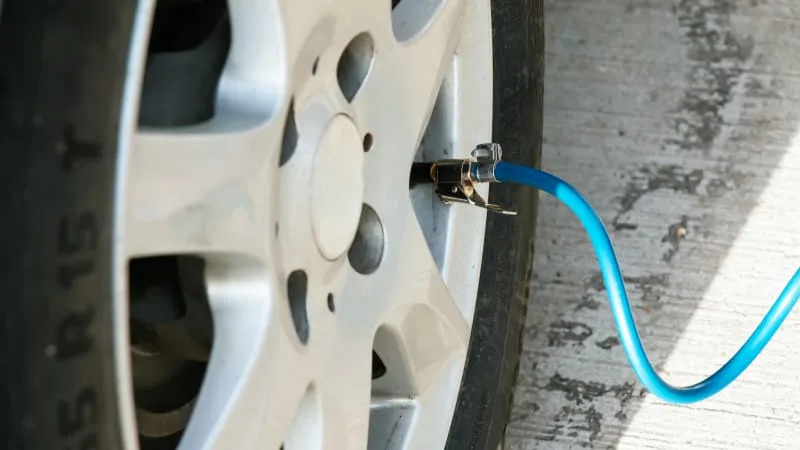
Once you add the air, use a pressure gauge to see if they are at the right PSI levels. Some tire inflators have a built-in pressure gauge that will show the PSI as you fill the tire. When you attach the compressor to the stem of the tire, and you hear a loud sound and you can feel the air then you are actually removing air from the tire. If you hear the air and don’t feel it all then you’re inflating the tire properly. If you have too little air, then keep on inflating. If you put in too much, then use the pressure gauge to take some air out until you reach your correct air pressure.
Step 5 – Put the valve stems back on
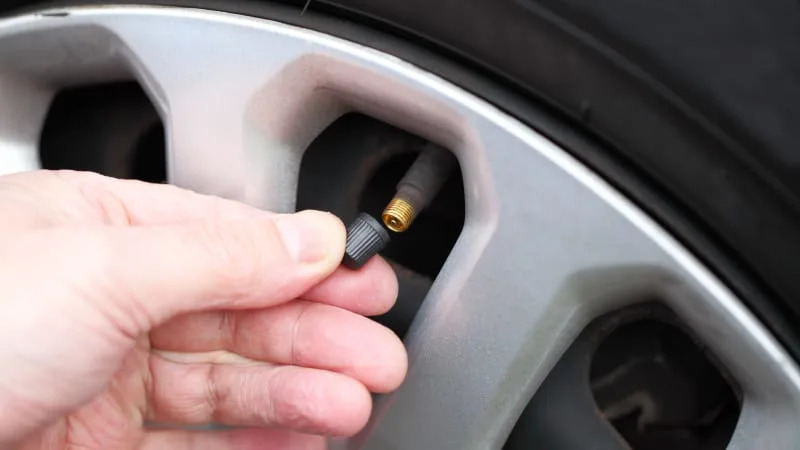
Once your tires reach the recommended PSI number on the gauge, then you can place the valve stems back on. Now you’re all done.
Tire Inflating FAQs
Where can I fill up my tires with air?
Most gas stations and car self-service car wash have a tire inflator available. They tend to be combined with the vacuum, just make sure you have the switch turned to air or you will use your money to pay for the vacuum instead.
How do I know if my tire needs air?
If you have a modern car with a Tire Pressure Monitoring System then you can check through the settings and you wll be notified if it’s too low. If you don’t have a TPMS system on your vehicle, then you can use a tire pressure gauge to check the levels manually
How do I find out how much air my tire needs?
The exact tire pressures your vehicle needs are on a sticker near the inside of the driver’s side door. It also has your tire size, weight and code to your vehicle’s paint.
What if the air won’t go in?
Make sure to double-check that your using the air compressor right. If the tire still won’t inflate, then you may have a puncture in your tire or a cracked wheel that can’t keep the air in. If that’s the case you may need to get the tire repaired at a shop or replaced.
What if my tires over-inflated?
If car tires are overinflated with too much air, they will have a more rounded shape than normal. They will build less traction while driving and cause more road noise than usual.
What if my tires are under inflated?
When car tires are underinflated, the bottom of the tire sticks out further to the side. With too little air they don’t perform as well and make driving less safe.
What does PSI mean?
Pounds per square inch, or PSI, is a measurement of air pressure. When you hear ‘Max PSI’ of a tire, is a reference to the maximum air pressure that the tire can safely handle, which is a measurement set by the tire manufacturer. It’s really important for you to be aware of PSI for your vehicle and follow the Max PSI guidelines when you fill your car tires with air. The Max PSI can be found on the sidewall of your tires.







